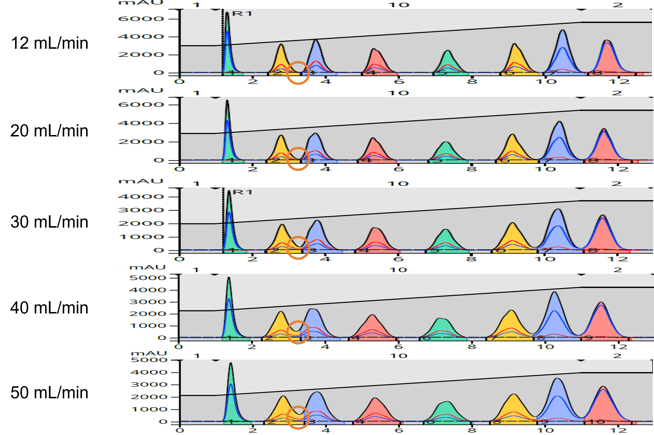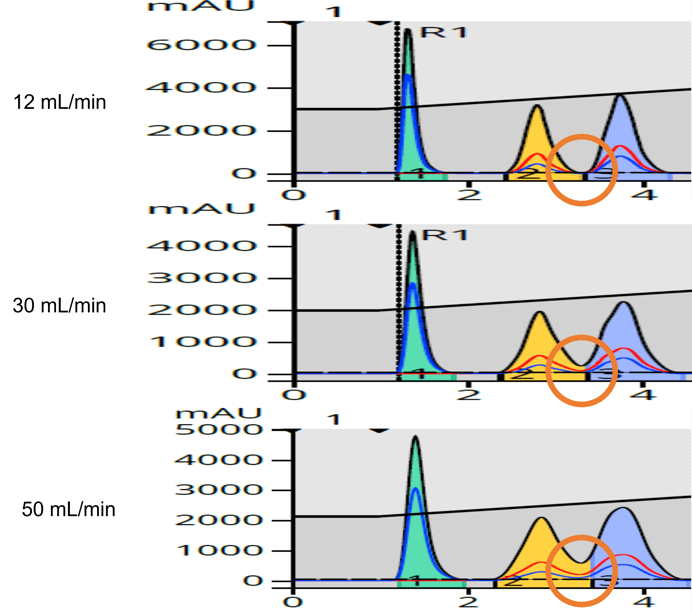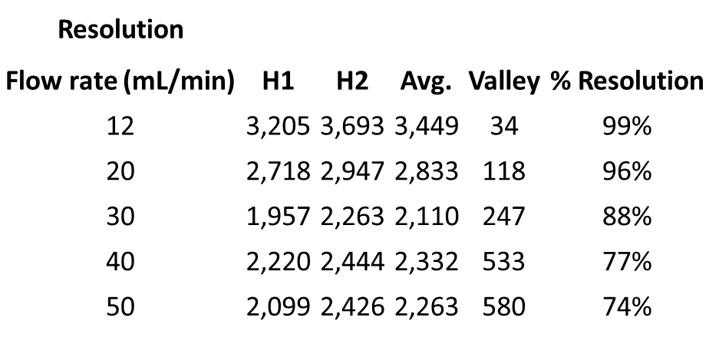May 30, 2023 3:00:00 PM
How does flow rate impact flash chromatography results?
By Bob Bickler

Flash chromatography is a purification technique that, by its name, is designed to be fast. Faster than open column chromatography and faster than prep HPLC. Flash chromatography is faster due to the larger media particles used in flash columns which then allow elevated flow rates and reduced pressure.
Flash column manufacturers provide suggested flow rates with their columns. These flow rates are offered as a compromise between separation performance and speed. You, as the chemist, can always increase or decrease the flow rate to meet your needs. However, there is a relationship between flow rate and separation performance which should be considered, especially if compound purity is critical.
If we look at reversed-phase flash chromatography, for example, default flow rates of commercial flash columns vary based on the manufacturer. Take, for example, nominal 12-gram C18 columns with ~30 µm particles, the suggested operational flow rates range from 12 mL/min to 30 mL/min based on the brand.
What happens to a purification as the flow rate changes? Let’s look at separation performance changes using the Biotage® Sfär C18 column and a 7-component mixture at 12, 20, 30, 40 and 50 mL/min, Figure 1.
Figure 1. Flow rate impact on separation performance. With an increased flow rate there is a decrease in separation efficiency best seen with the orange circles.
The impact of increasing flow rates is a broadening of the peaks and a decrease in resolution. This is important because compound purity increases with increasing resolution between your target product peak and its nearest eluting by-product peaks. This is best seen with the separation of peaks 2 and 3 (orange circles). A zoomed view is seen in Figure 2.

Figure 2. Zoomed view of the resolution between peaks 2 and 3 for flow rates 12, 30, and 50 mL/min. This data shows a slight resolution decline between 12 and 30 mL/min and a more significant change between 30 and 50 mL/min.
How much resolution is lost with increased flow rate can be calculated by looking at the height of the valley between two adjacent peaks relative to the average of the two peaks’ heights, Table 1. Table 1. Impact of flow rate on resolution.
Table 1. Impact of flow rate on resolution.
Based on the data in this table, there is only a 3% drop in resolution between 12 and 20 mL/min and an 11% decline between 12 and 30 mL/min. If we equate % resolution with % purity (not a 100% surety), then a 30 mL/min flow rate (88% resolution/88% purity) would be sufficient for most intermediate compound purifications.
Flow rate is not the only variable that impacts separation performance. Carbon content and bonding chemistry also play a role. More on that in a future post!
Interested in learning more about flash chromatography? Visit our flash chromatography Knowledge Center.
Published: May 30, 2023 3:00:00 PM


